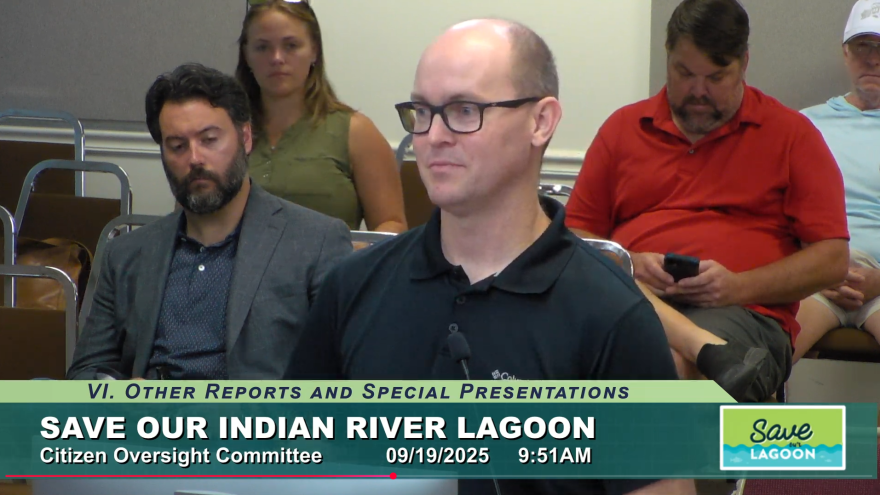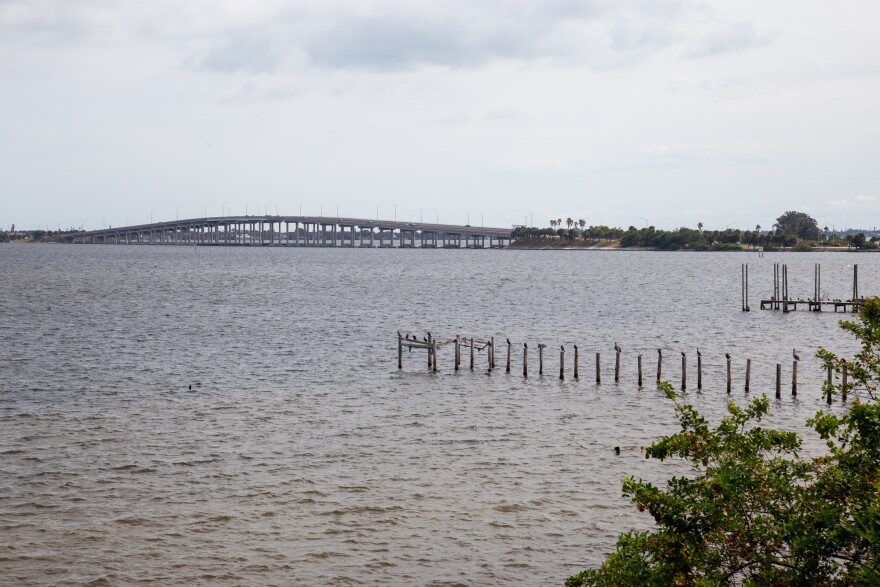So far, since launching in 2016, Brevard County’s Save Our Indian River Lagoon or SOIRL program has taken on 201 projects that are either already finished or currently underway. The program, funded by a half-penny sales tax, aims to restore the lagoon system to better health, by reducing pollution levels entering the water and removing legacy pollution built up over time.
For more than 100 years, muck has been accumulating in the lagoon, forming deep deposits known as muck pits. Some of the muck is likely left over from the days when discharges of sewage directly into the lagoon were an everyday occurrence, according to Austin Fox, assistant professor of ocean sciences at the Florida Institute of Technology.
“That was a routine practice, until 1995. This stuff persists,” Fox said at Friday’s monthly meeting of SOIRL’s citizen oversight committee.
The Indian River Lagoon System and Basin Act of 1990 halted most of those sewage discharges by mid-1995, according to the Florida Department of Environmental Protection. But to this day, nutrients from that sewage of yesteryear continue cycling through the lagoon, fueling algal blooms and hypoxic — low oxygen — conditions.
Muck in the Indian River Lagoon is different from the kind of muck often found in lakes. Lagoon muck decomposes much more slowly than lake muck, partly because of how slowly water cycles through the lagoon system. On average, it takes 200-300 days for freshwater to enter the lagoon from a river, then make its way back out through one of the lagoon’s inlets, according to Fox.
A muck pit is sort of like a trash can, Fox said — and eventually, it overflows.
“Your trash can overflows, you get pasta sauce all over the carpets. Now, instead of just taking out the trash, you have to change the rugs. Right?” Fox said. “If we can avoid that overflow, I think there's incredible value to that.”

Florida Tech scientists are working to learn more about where the lagoon’s largest muck deposits are, and what they’re doing to the unique ecosystem. A network of roughly 80 sensors placed throughout the Banana River Lagoon and adjacent canals monitors levels of dissolved oxygen continuously, every hour, from the bottom of the water column.
So far, those sensors are revealing new, valuable findings about low-oxygen conditions in the Banana River. Those hypoxic conditions can fuel algal blooms, which only suck more oxygen from the water as the blooms die off.
Without enough oxygen in the water, it’s not just fish that can die, but also benthic creatures: crabs, clams and worms that play a key role in the lagoon ecosystem, according to Rebecca English, a Florida Tech graduate student working towards a Ph.D in oceanography.
“Not everything is able to swim away. So there's a lot of mortality events that can occur because of hypoxia that don't actually get reported,” English said. “And when you look at the amount of the lagoon that we've been tracking through our dissolved oxygen network, approximately 5% of the lagoon is hypoxic at any given time.”

Those hypoxic conditions are not only affecting parts of the lagoon where there are muck deposits, but also other, sandy areas without muck, as Florida Tech scientists are learning. Although sand generally helps remove nutrients from water, scientists are concerned that hypoxia in the lagoon could be making it hard for the sand to do its job.
“For a long time, we'd only looked at the deposit, right? The muck is bad,” Fox said. But now, “We're seeing impacts to the sand as a result of the muck being there.
“Now we're actually able to quantify the extent of hypoxia around the muck deposits. And so we're starting to be able to quantify those broader impacts,” Fox said. “I think that's going to really help us to prioritize things.”

Muck dredging projects are underway to remove some of the lagoon’s legacy muck, including in the Grand Canal. That canal is right next to the Banana River Lagoon, where Fox says his team’s found some of the lagoon’s worst-offending muck deposits.
But given what scientists are learning now about hypoxia in the lagoon, it’s not only the Banana River that stands to benefit from that dredge project.
“The way we’re doing it now: we dredge the muck, we've benefited that spot,” Fox said. “But we're arguing that the area of benefit is 5, 6, 7 times bigger than that.”
In Brevard County’s lagoon watershed, muck decay is by far the largest source of nitrogen entering the system each year, followed by stormwater.
Unless the half-cent sales tax funding the program gets renewed, the county will stop collecting it after 2026.
The Indian River Lagoon is one of 28 designated Estuaries of National Significance. This year, National Estuaries Week is September 20-27.






